by Ian Skellern
Welcome to the 2018 edition of Quill & Pad’s Grand Prix d’Horlogerie de Genève predictions in which the team picks favorites and explains why.
The panelists are:
Ian Skellern (IS), co-founder and technical director
Joshua Munchow (JM), resident nerd writer
Martin Green (MG), resident gentleman
Alex Ghotbi (AG), vintage watch expert at Phillips
Ashton Tracy (AT), contributor, watchmaker, and blogger
Note: as jury members, editor-in-chief Elizabeth Doerr and resident collector GaryG do not take part in these early predictions.
The GPHG foundation describes the Chronometry category for watches entered as: “mechanical watches that contain at least one tourbillon and/or a special escapement and/or another development improving precision timekeeping. Additional indications and/or complications are admissible.”
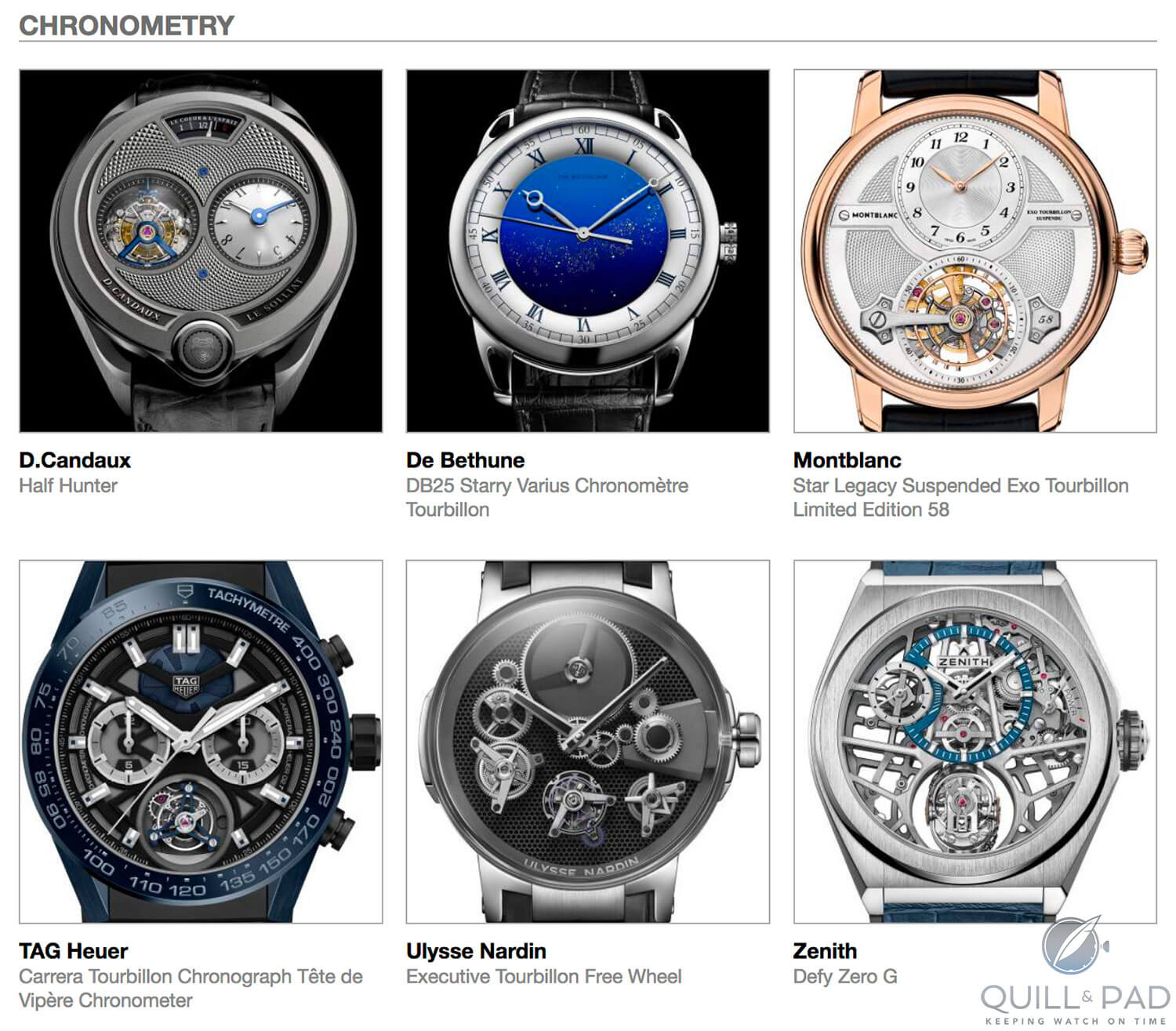
Chronometry category shortlisted watches for the 2018 Grand Prix d’Horlogerie de Genève, clockwise from top left: David Candaux Half Hunter, De Bethune DB25 Starry Varius Tourbillon, Montblanc Star Legacy Suspended Exo Tourbillon Limited Edition 58, TAG Heuer Carrera Tourbillon Chronograph Tête de Vipère Chronometer, Ulysse Nardin Executive Tourbillon Free Wheel, and Zenith Defy Zero G
AG: I appreciate that the GPHG has created a category dedicated to chronometry, which takes us to the basic reason for the existence of watches in the first place. I may sound like an old hag, but watches aren’t just about looks and funky designs.
IS: While I have no particular affinity to tourbillons except when they are done exceptionally well, “Mechanical watches containing at least one tourbillon and/or a special escapement and/or another development improving precision timekeeping” is my definition of a great watch, and I applaud the GPHG for including a category to encourage precision and real horological innovation.
Horology at its heart is all about precision (aka chronometric performance), and while quite a few of the watches pre-selected here pay lip service to better accuracy, it’s more difficult for me to see that they go any deeper into than that. Happily there are at least two exceptions.
MG: In many ways this is the most interesting category of the GPHG as it represents the essence of the watch. It also has a very interesting and diverse lineup that is so strong they could all be winners.
JM: The Chronometry category is a tough category if you actually want to judge the creativity of the engineering and the overall chronometric performance. The rules for the category state that entries should be “mechanical watches comprising at least one tourbillon and/or a special escapement and/or another development improving chronometry (precision timekeeping).” This means that, as would be expected, the chronometric performance is a final ruler to judge similar movements, and discussions of what solutions have been used should probably include test results for comparison.
And that is the issue, going strictly by the text provided on the Grand Prix d’Horlogerie de Genève site: only one watch text actually mentions anything about specific accuracy (but doesn’t get into how it achieved it), four only touch on the idea of chronometry (with two calling out specific testing regimes but no numbers), and one never even mentions accuracy or chronometry. Obviously they are all amazing watches, and if you know enough about watchmaking you can start to infer the importance of what some of the watches have accomplished.
But, there is a disturbing lack of specifics and technical details for a category that is literally built on the idea of being made to judge a very specific type of achievement and its effect on a very specific number.
Perhaps there is much more information given to the jury for its use in judging the pieces, but if the information available elsewhere online is any indication I feel most of these watches (and their specific brands) don’t try very hard to illuminate how accurate the watches actually are.
David Candaux Half Hunter
AT: I can appreciate this watch for what it is, but it doesn’t do much for me. A lot of time and effort has gone into creating a man’s dream, but I don’t think it’s doing enough to take the prize.
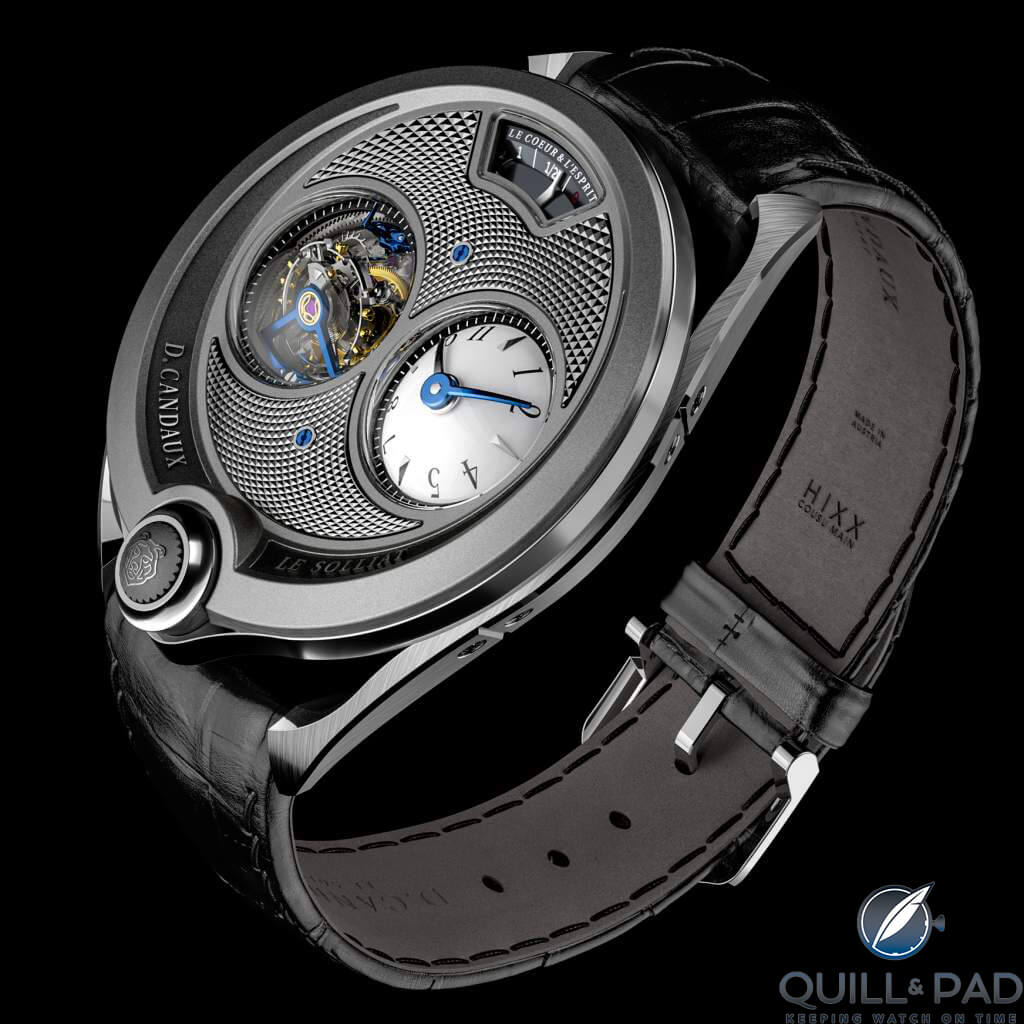
David Candaux Half Hunter
JM: Candaux’s Half Hunter, a follow up to 2017’s 1740 model, is a rather impressive timepiece. Featuring a tourbillon that rotates on two separate axes at three-degree and further 30-degree angles, the movement, case, and entire style is definitely a step outside the norm, shining as an example of creative independent watchmaking.
But unlike a contemporary Greubel Forsey, the Half Hunter doesn’t actually demonstrate how the bi-axial tourbillon affects chronometry, aside from the text saying it was designed to combat gravitational effects on chronometry. In fact, most of the discussion of chronometry is passive, definitely commmunicating nothing about impressive accuracy or precision numbers aside from implying that the construction method must make it more accurate. Without numbers or even a certificate proving a base level of precision, I can’t elevate it to a winning position in this category.
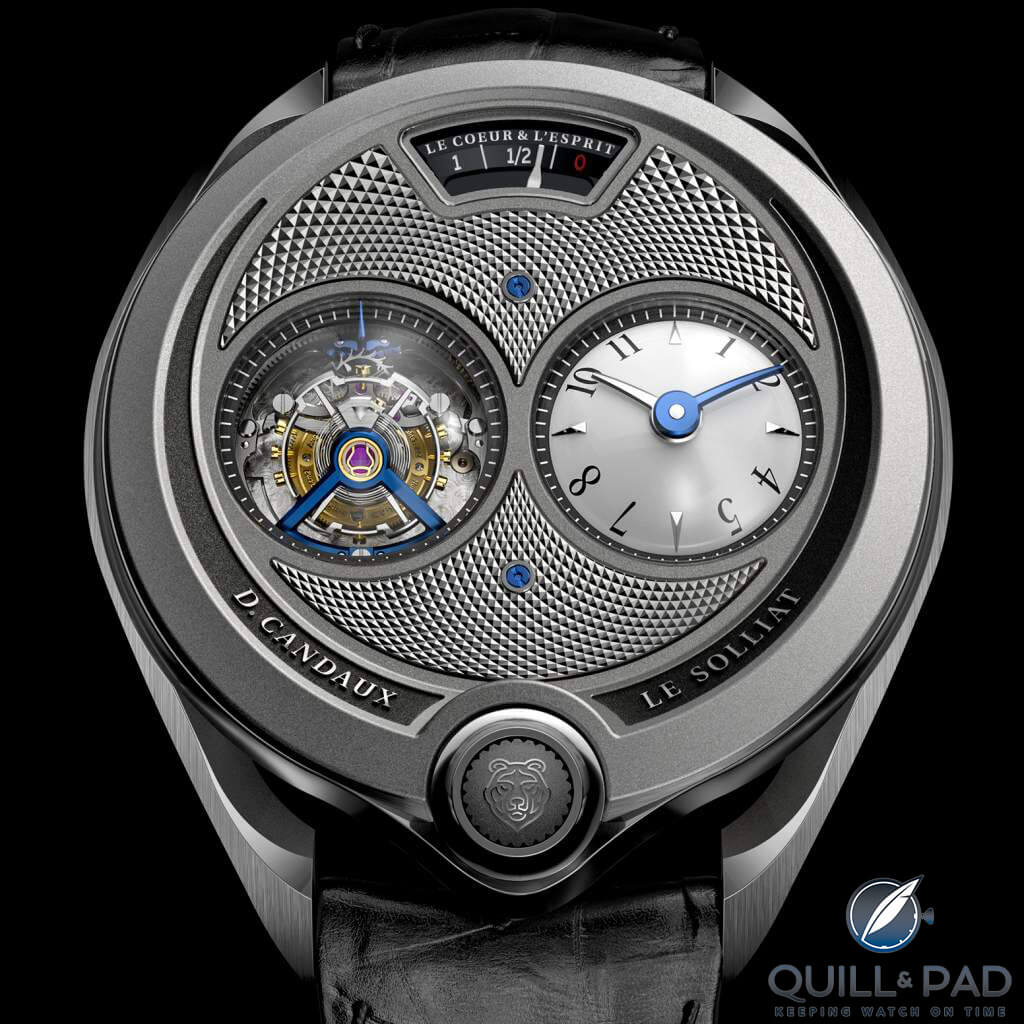
David Candaux Half Hunter
MG: My opinion of this watch hasn’t changed since last year’s introductory version: an absolutely stunning creation, and I think that this version is even nicer. That might give it the edge to secure a win, which is something it most certainly deserves.
For more information please visit gphg.org/horlogerie/en/watches/half-hunter.
Quick Facts David Candaux Half Hunter
Case: 43 x 12.65 mm, titanium
Movement: manual winding Caliber 1740 Half Hunter Tourbillon with one-minute tourbillon, 55-hour power reserve, 3 Hz/21,600 vph frequency
Functions: hours, minutes, seconds; power reserve indication
Limitation: 8 pieces
Price: 235,000 Swiss francs
Montblanc Star Legacy Suspended Exo Tourbillon Limited Edition 58
AT: This is truly a beautiful tourbillon; it’s classic and elegant. That guilloché dial is just beautiful. I really like the way the limited number has been applied to the dial, and the tourbillon bridge is something to be admired. I don’t think it will be coming in first, but Montblanc has made a beautiful timepiece.
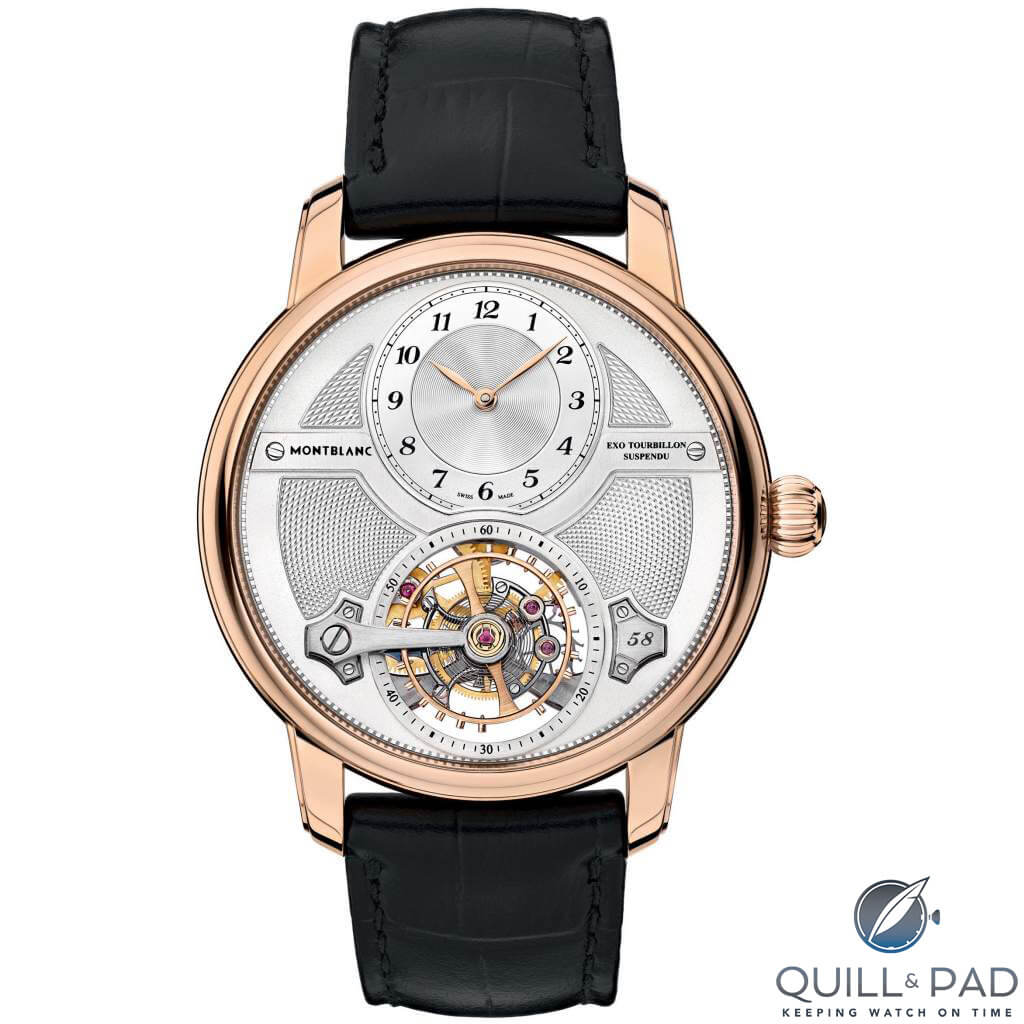
Montblanc Star Legacy Suspended Exo Tourbillon Limited Edition 58
IS: The Montblanc Star Legacy Suspended Exo Tourbillon Limited Edition 58 is truly a beautiful-looking classical watch. And to highlight the tourbillon regulator, the balance has been lifted 3.2 mm to float above the dial. The Suspended Exo Tourbillon certainly showcases its chronometry, but I’m not convinced that it contributes enough to chronometric performance or technology to win this category. But it’s no less an exceptional wristwatch for that.
MG: Montblanc is a brand that profoundly confuses me as it offers so many different styles at so many different price points and with so many watches that all seem to want to appeal to a different target group. This takes away from my excitement for the technically very beautiful Star Legacy Suspended Exo Tourbillon. A stunning watch, but somehow I still expect it to be from a different brand.
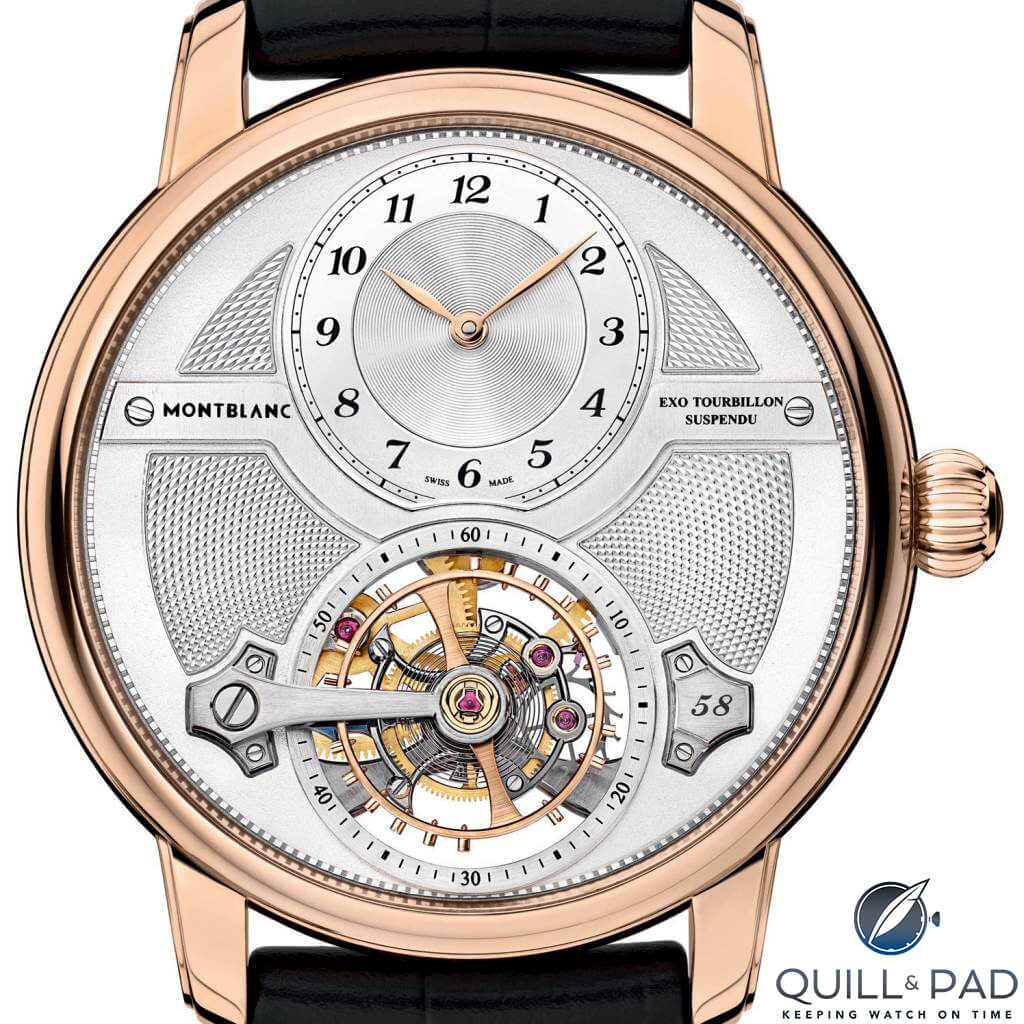
Montblanc Star Legacy Suspended Exo Tourbillon Limited Edition 58
JM: Montblanc catches a lot of insider “flak” possibly because there is a predisposition among people familiar with the industry to judge brands that cross into watchmaking with no history after buying a watchmaking factory with its own background. The Star Legacy Suspended Exo Tourbillon Limited Edition 58 represents a valiant attempt at creating an “iconic” tourbillon model for the brand, something that is by all measures very awesome.
The massive outsized tourbillon floats above the dial and dazzles the eyes, and the movement is of course made by the venerable Minerva, proving its provenance with the name. But, alas, aside from talking about Montblanc’s Laboratory Test 500, which the brand applies to all the manufacture Montblanc pieces, the text doesn’t discuss actual chronometric ability (how the tourbillon makes it more accurate).
For more information please visit gphg.org/horlogerie/en/watches/star-legacy-suspended-exo-tourbillon-limited-edition-58.
Quick Facts Montblanc Star Legacy Suspended Exo Tourbillon Limited Edition 58
Case: 44.8 x 15.03 mm, red gold
Movement: manual-winding Caliber MB M16.68 with one-minute suspended tourbillon, 50-hour power reserve, 2.5 Hz/18,000 vph frequency
Functions: hours, minutes, seconds
Limitation: 58 pieces
Price: 105,200 Swiss francs
Ulysse Nardin Executive Tourbillon Free Wheel
AT: At first glance, it’s a strange-looking beast. But when you do some digging, you realize this is one serious timepiece. It makes use of Ulysse Nardin’s new silicon escapement, which is all about precision. Combine that with the “free wheel” design of the movement and you are left with a modern watch that is pushing the boundaries. Will UN’s latest feat be enough to take the crown? Unfortunately, I don’t think so.
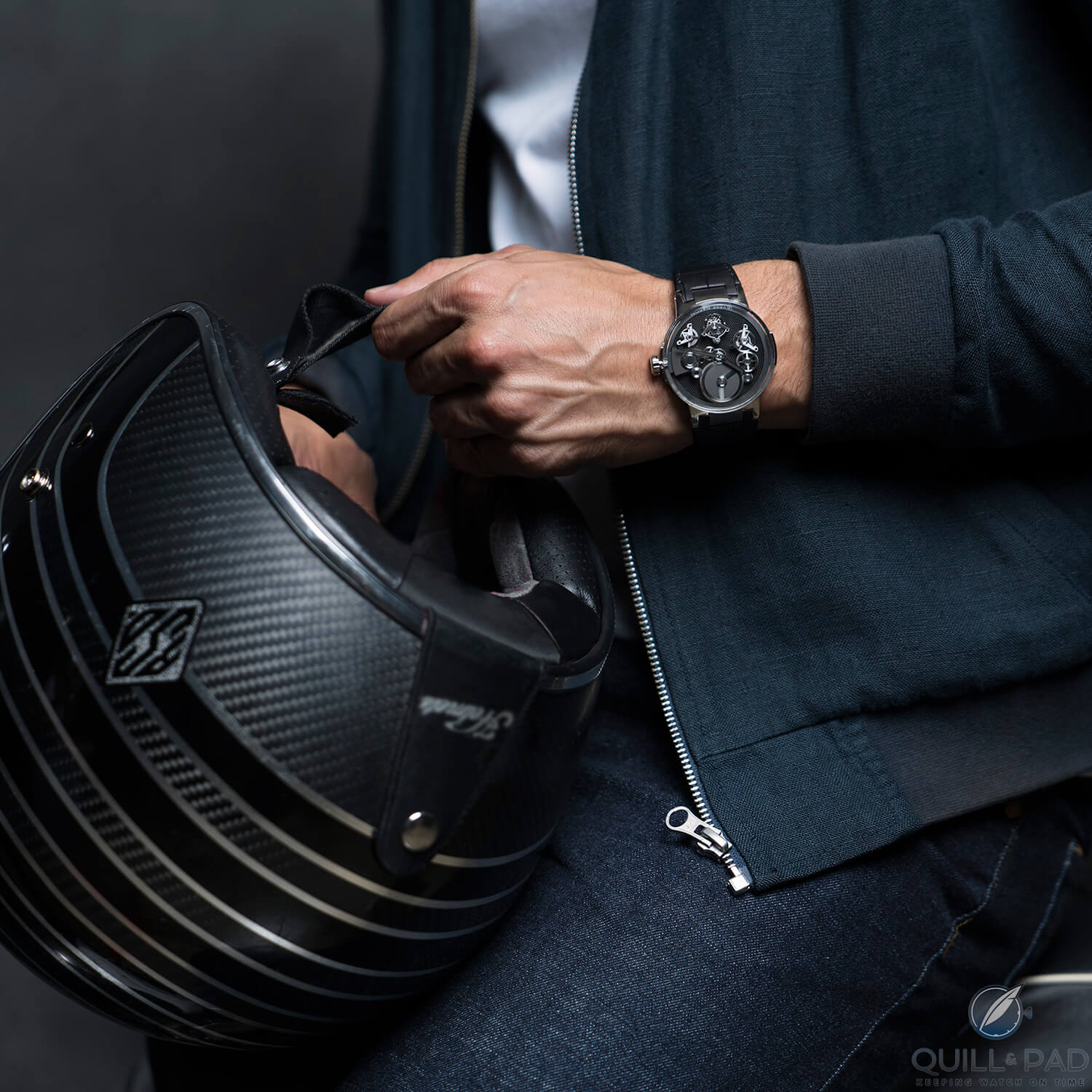
Ulysse Nardin Executive Tourbillon Free Wheel
JM: In third place I choose a brand-new timepiece that is definitely a visual stunner and includes technology that is certainly set to make a difference for accuracy over the long run. The Ulysse Nardin Executive Tourbillon Free Wheel is a dramatic separation of the gear train and the flying tourbillon thanks to a honeycomb dial that hides the connection underneath, making it appear that the flying tourbillon is spinning all alone out on that big dial. The execution of the skeletonized components, all arranged on a main plate, is a strong design choice not unlike the very popular Freak from Ulysse Nardin.
The Executive Tourbillon Free Wheel incorporates the recently integrated Ulysse Nardin Anchor escapement to create a flying, friction-free silicon escapement to replace the traditional Swiss-lever design. Based on its construction it should definitely be very precise with the impulse to the balance being nearly constant force.
Of course, none of this is detailed. And not one mention of accuracy can be found in the text (or in most articles elsewhere online), so any true chronometric advantage can only be guessed at. The watch is amazing, and I am confident it holds its own chronometrically, but in a Chronometry competition category, you actually need to talk about it if you want to win.
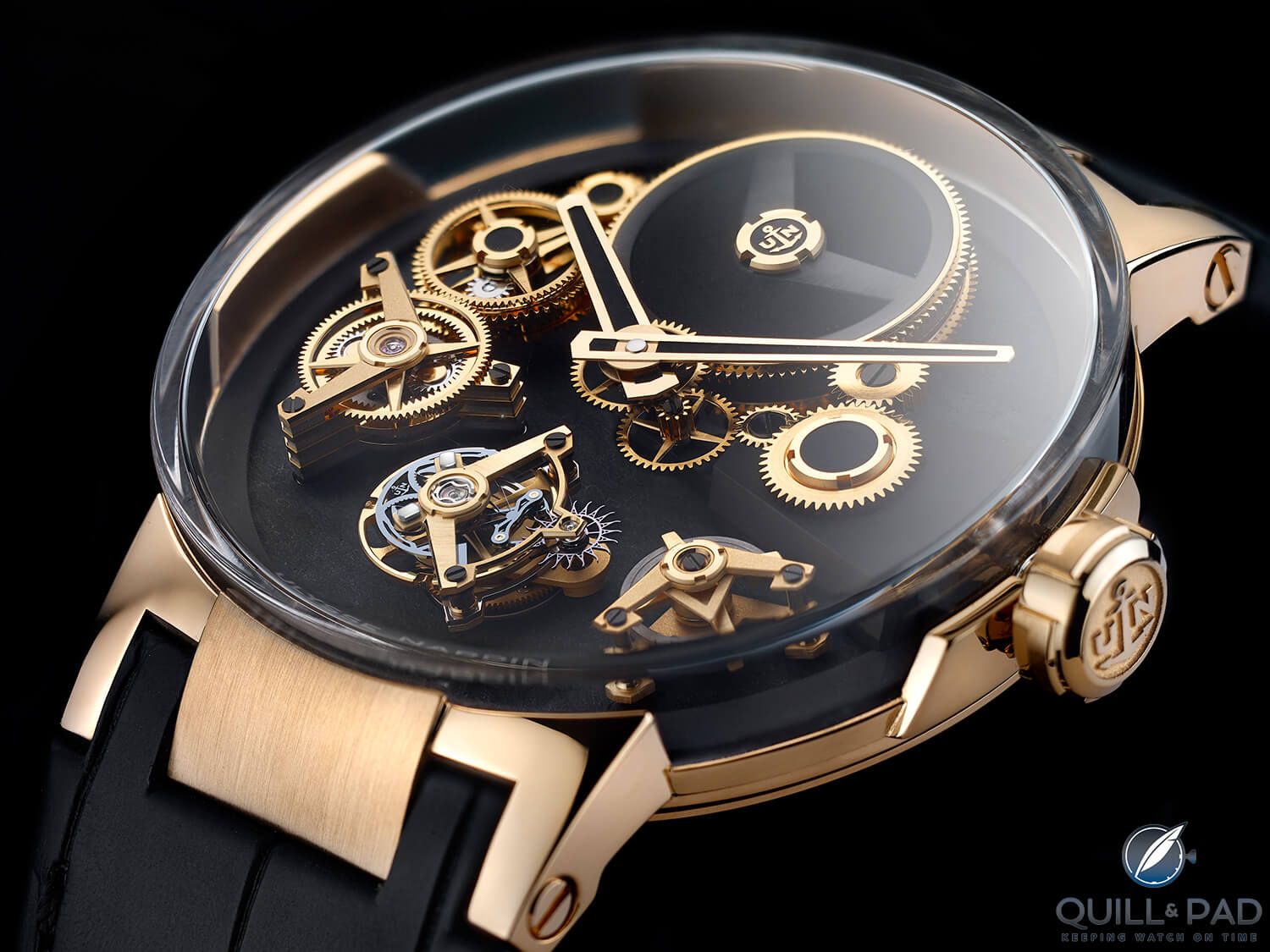
Ulysse Nardin Executive Tourbillon Free Wheel in gold
IS: Ulysse Nardin has serious credibility when it comes to special escapements and chronometry: the Le Locle-based brand was a pioneer in both silicon and synthetic diamond components and has developed innovative escapements that were haute horlogerie, but non-chronometric like on the Freak and the supposedly (I’ve not seen any test or timing data) highly chronometric Ulysse Nardin Anchor escapement as Joshua mentioned. And it’s the latter powering the Ulysse Nardin Executive Tourbillon Free Wheel. I like the open dial and movement, especially on the gold case/black base plate version where the mechanisms really pop out.
However, it’s the Ulysse Nardin Anchor escapement that has me giving the Executive Tourbillon Free Wheel my vote for second place.
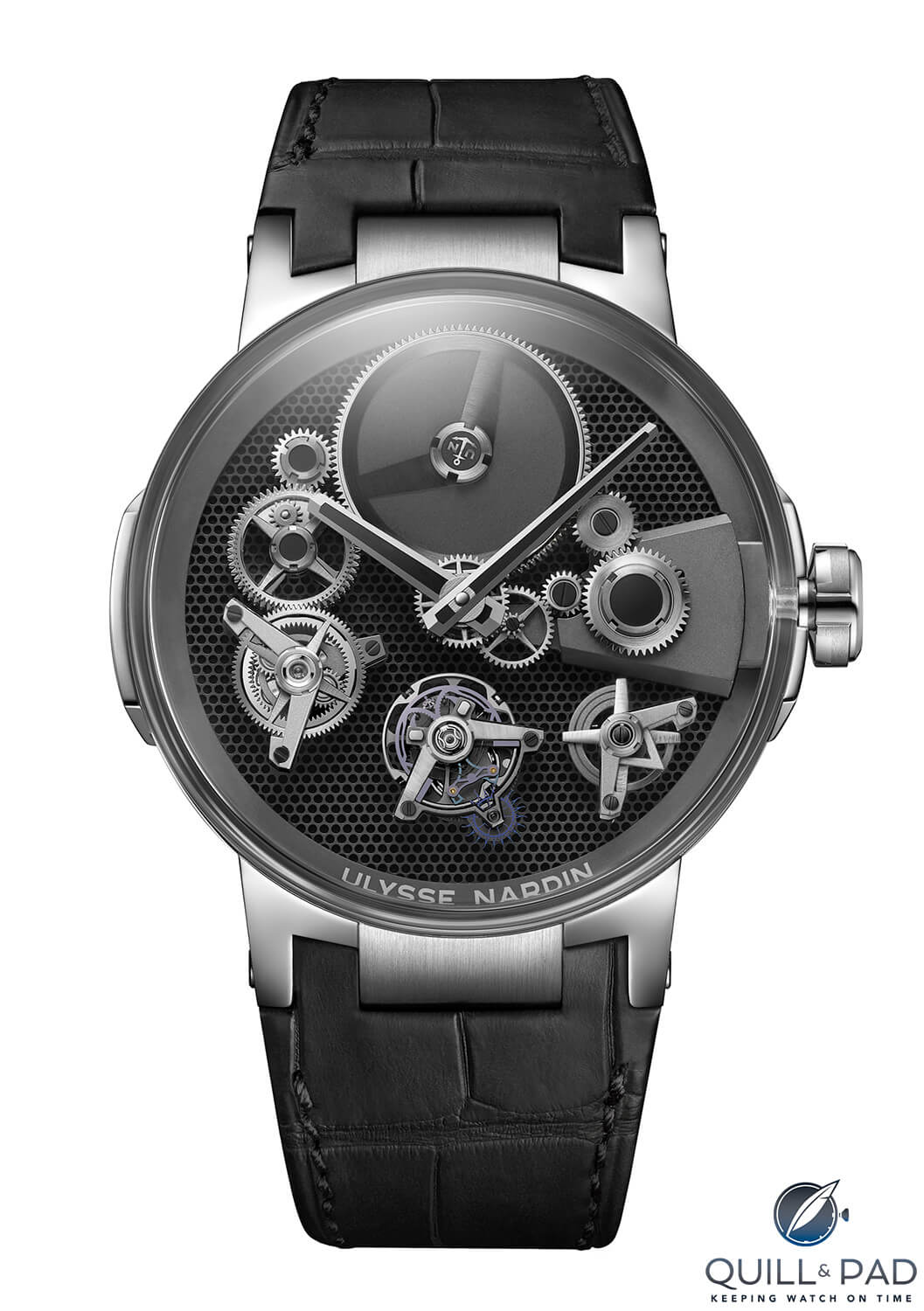
Ulysse Nardin Executive Tourbillon Free Wheel
MG: Ulysse Nardin is known to make watches that tantalize the senses in terms of design. For me the brand went overboard this time. While I don’t deny its imposing technical accomplishment, I think that the dial is a mess. It’s good, though, because that is exactly what a Ulysse Nardin should do: be a conversation piece that not everybody loves, while nobody can make any negative remarks about its technical craftsmanship.
For more information please visit gphg.org/horlogerie/en/watches/executive-tourbillon-free-wheel.
Quick Facts Ulysse Nardin Executive Tourbillon Free Wheel
Case: 44 x 13.5 mm, white gold
Functions: hours, minutes; power reserve indication
Movement: manually wound Caliber UN-176 with one-minute tourbillon and “floating” wheels, 170-hour power reserve, 2.5 Hz/18,000 vph frequency
Price: 99,000 Swiss francs
TAG Heuer Carrera Tourbillon Chronograph Tête de Vipère Chronometer
JM: I chose the TAG Heuer Carrera Tourbillon Chronograph Tête de Vipère Chronometer as my second-place winner because it is a very affordable tourbillon chronograph that has achieved chronometer certification in tests by the Besançon Observatory, earning the “viper bead” stamp that marks it as a chronometer.
The design is ultimately modern with a ceramic case and very bold, straight lines, and yet it creates a timepiece that is able to pass a very old test for chronometry. For many, the style is a bit divisive, but the quality is hard to overlook. The biggest issue I have with it, and why it doesn’t take the top spot for me, is that aside from mentioning it has achieved chronometer status, the text doesn’t actually get into how well it did.
In a watchmaking competition being a certified chronometer is a big deal, but in a chronometry competition it is sort of par for the course. I wouldn’t hand out trophies to every watch that passed the minimum requirements; I would want to know which one did the best out of the already incredible field. So until we see exactly how well it did, in my mind it only just qualified to be a participant in the competition.
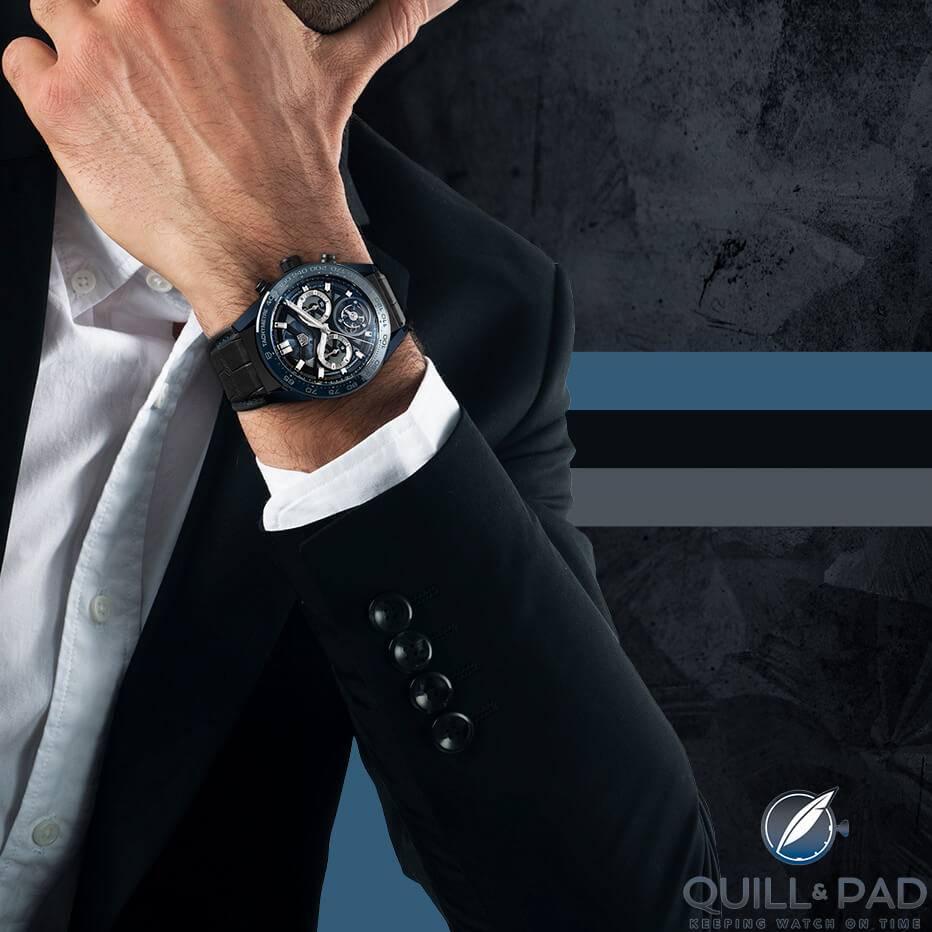
TAG Heuer Carrera Tourbillon Chronograph Tête de Vipère Chronometer on the wrist
AT: The fact that TAG Heuer can sell a tourbillon for under 20,000 CHF still impresses me. At the end of the day, though, this is not a particularly special tourbillon, and for that reason I don’t believe it will be top of the lot. A solid offering, but for me it’s just too “Carrera looking.”
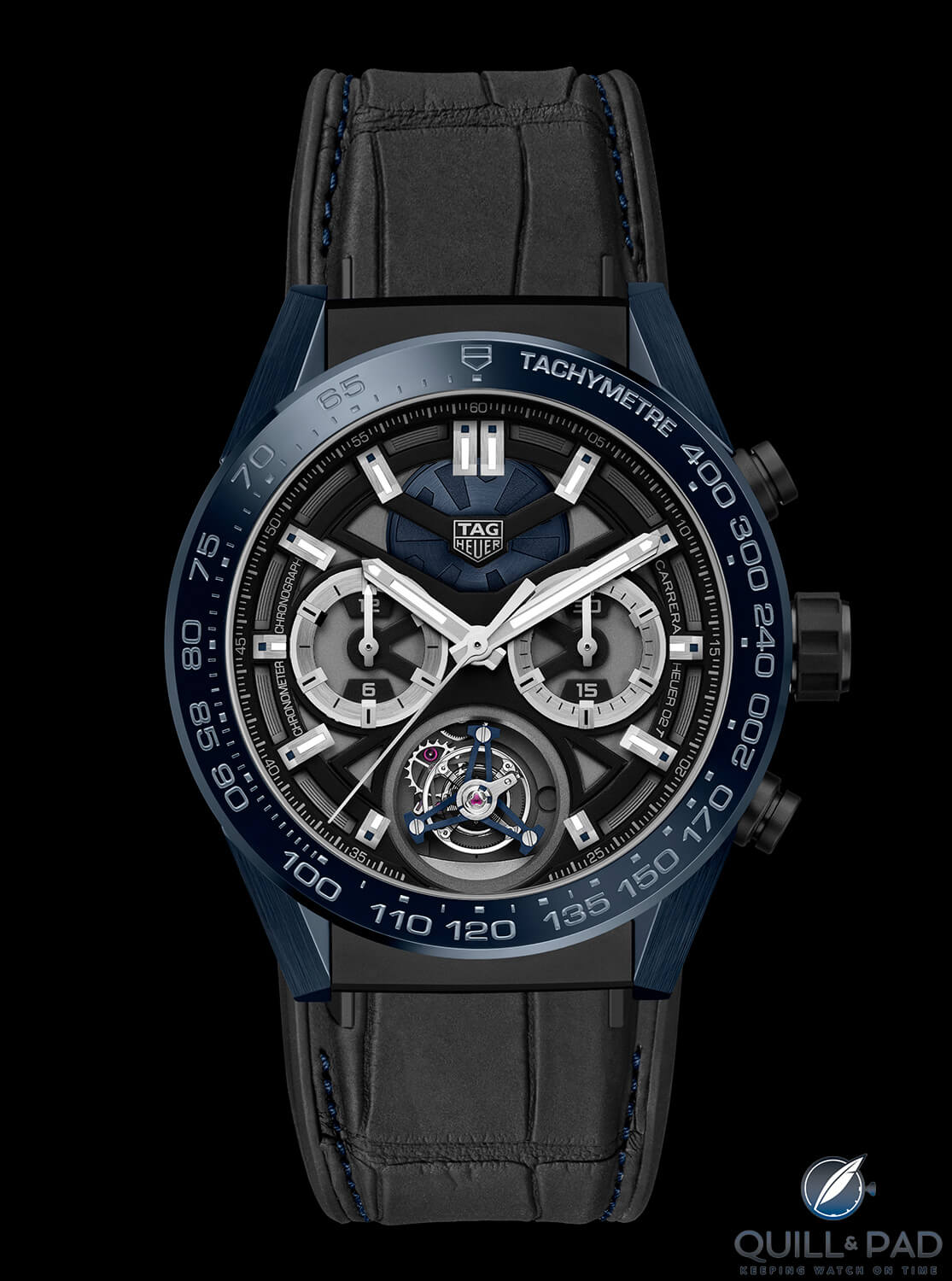
TAG Heuer Carrera Tourbillon Chronograph Tête de Vipère Chronometer
IS: If you are looking for a tourbillon chronograph that will only cost the price of a car rather than a house, then the Carrera Tourbillon Chronograph Tête de Vipère Chronometer may well be the watch for you. I do like the fact that TAG Heuer has the watches tested to chronometer precision by the Besançon Observatory, which indicates that the tourbillon hasn’t just been slapped in, but I see this as first and foremost a precision chronograph rather than a precision innovator.
The Tête de Vipère Chronometer meets yesterday’s test for precision; I expect the winner of this category to be setting tomorrow’s precision standard or at a minimum making significant progression down that path..
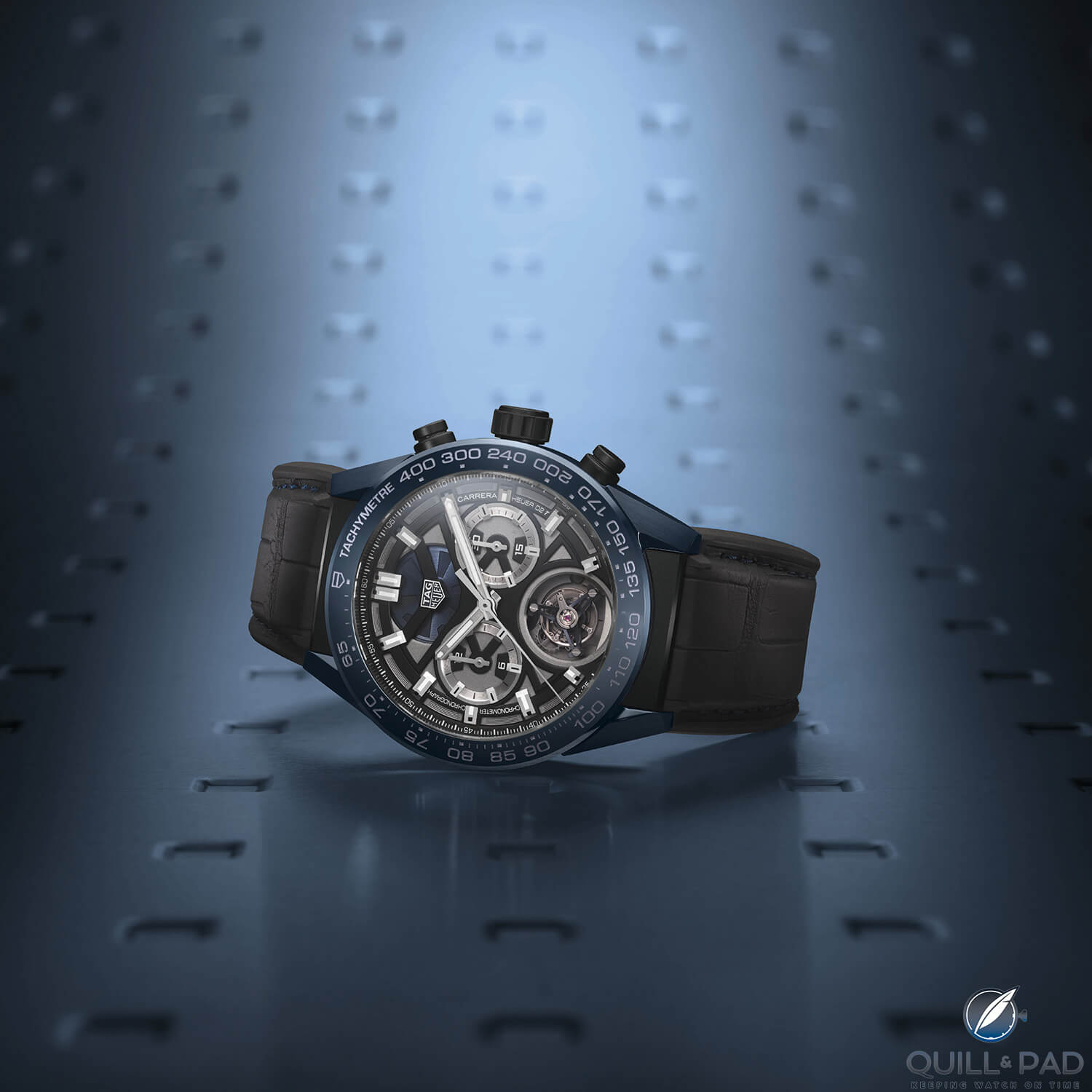
TAG Heuer Carrera Tourbillon Chronograph Tête de Vipère Chronometer
MG: The most affordable flying tourbillon with a chronograph (or is it the other way around?) shows its fangs with the rare Tête de Vipère certification. I have been a fan of this watch ever since it was introduced, and this is currently the ultimate model. Its certification shows that it is not only a watch that was created to make a statement and draw attention, but that it is a solid performer at an incredible price point. My winner of this category.
For more information please visit gphg.org/horlogerie/en/watches/carrera-tourbillon-chronograph-tete-de-vipere-chronometer.
Quick Facts TAG Heuer Carrera Tourbillon Chronograph Tête de Vipère Chronometer
Case: 45 x 16.24 mm, ceramic
Movement: automatic Caliber HEUER-02T with one-minute tourbillon; 65-hour power reserve, 4 Hz/28,800 vph frequency; chronometer certified by the Besançon Observatory
Functions: hours, minutes, seconds; date, chronograph
Limitation: 500 pieces
Price: 19,900 Swiss francs
Zenith Defy Zero G
AT: I am obsessed with marine chronometers and I love what Zenith has done with the Defy Zero G. I think this will be the year’s winner among the Chronometry category offerings. Whether this watch actually cancels out the effects of gravity is something that will need to be examined further, but I think the innovation coming from Zenith is a great thing.
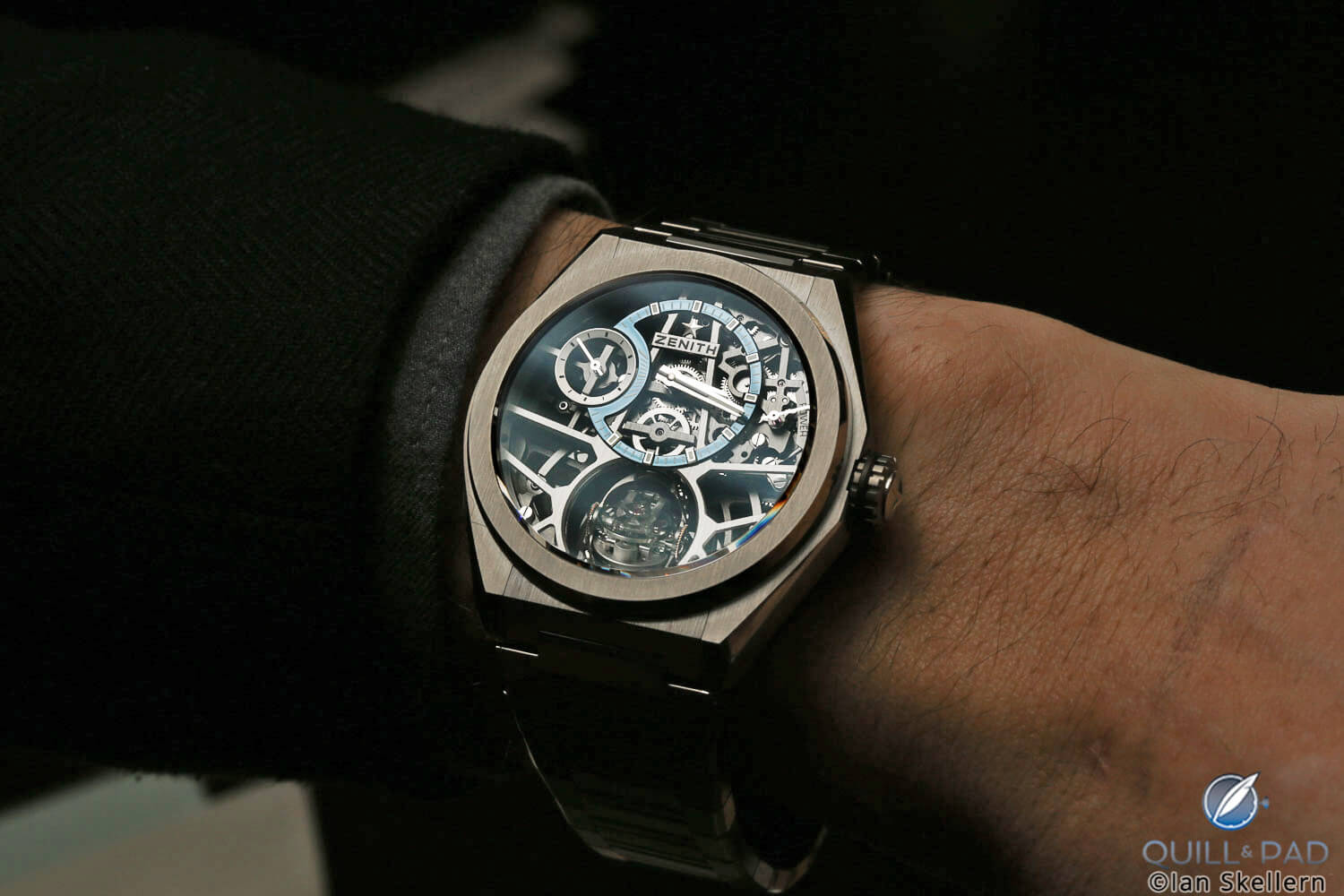
Zenith Defy Zero G on the wrist
IS: I love the innovative concept behind both the Zenith Zero G and now the all-new-improved Zenith Defy Zero G by gimballing the regulator in a similar way to how ship’s chronometers were gimballed so that they rested in a stable position while the ship was pitching and rolling. It’s much easier to regulate a movement for one or two positions than for five or six positions as is the case for a well-adjusted wristwatch. But while the idea is chronometrically sound in theory, I can’t help but think that it’s less an advance in precision that an extremely cool mechanism.
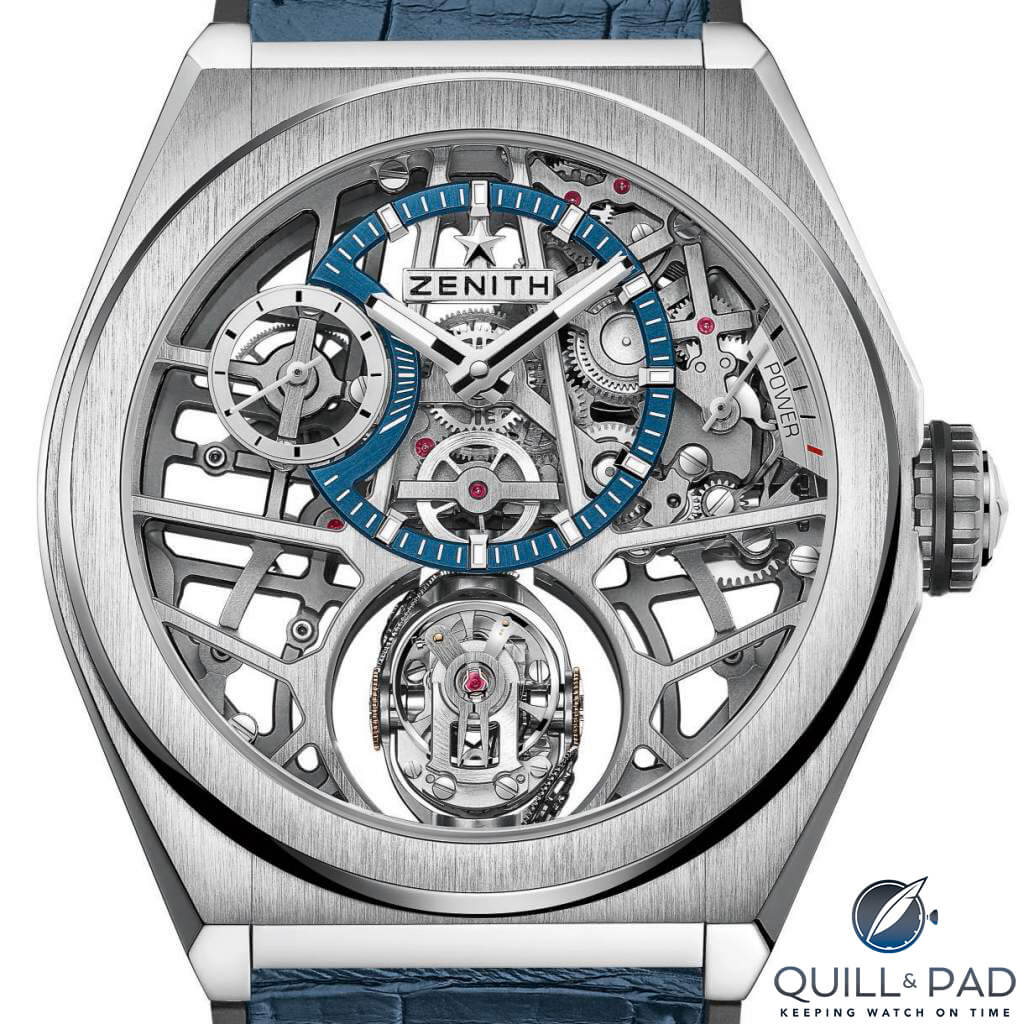
Zenith Defy Zero G
JM: Now here is a watch that is supposed to be about ultimate precision and the elimination of the effects of gravity in every position. It isn’t a tourbillon, but a gyro-mounted balance and escapement that is free to rotate in any direction. This latest Defy Zero G sees the size of the original mechanism reduced down to 30 percent of the original size, which makes the piece much more wearable for the average collector. But, as we have seen, the actual effects on chronometry are not discussed outside of saying it was built to improve chronometry and consistency by removing outside influences.
Anyone that has handled the watch knows the gyro mechanism is truly free to spin apart from the watch, but it doesn’t mean it stays level or even that it doesn’t experience significant outside forces. I imagine this is why the actual performance isn’t noted, probably because it ends up being similar to other normal watches where rate is concerned. The idea is truly awesome, and the execution is superb, but if advanced chronometry is the goal, we can’t know if it does anything without some hard numbers. Sorry, but this one misses the top position by a long shot.

Zenith Defy Zero G in titanium on titanium bracelet
MG: I have always been a fan of the gyroscopic “Gravity Control” unit of Zenith, which makes in many ways more sense then a tourbillon. But in the previous watches it was simply too large and bulky, and because of that it resulted in some less attractive watches. By miniaturizing it Zenith solved all that and created the beauty that the Defy Zero G is!
For more information please visit gphg.org/horlogerie/en/watches/defy-zero-g.
Further reading: Zenith Defy Zero G: A Lesson In Miniaturization
Quick Facts Zenith Defy Zero G
Case: 44 x 14.85 mm, titanium
Movement: manual winding Caliber El Primero 8812 S with gyroscopic, cardanically suspended escapement beating at 5 Hz /36,000 vph with a 50-hour power reserve; 324 components (139 in escapement plus carriage); 41 jewels
Functions: hours, minutes, small seconds; power reserve
Price: 99,800 Swiss francs (strap), 100,800 Swiss francs (bracelet)
De Bethune DB25 Starry Varius Chronomètre Tourbillon
JM: The winner for me is clear, as I am being a stickler for details, and the De Bethune DB25 Starry Varius Chronomètre Tourbillon does what I asked every other watch to do: tell me exactly how accurate you are!
With an ultra-light and high-frequency titanium balance (5 Hz) oscillating in an ultra-light tourbillon, the Starry Varius Chronomètre Tourbillon aims to be an incredible, sturdy, and stable tourbillon with impeccable precision. It has been measured to have an on-wrist accuracy of +/-1 second per day, a very impressive feat for a real-world test. It also puts this watch well past the basic requirements of chronometry certification, which are (based on ISO 3159) usually -4/+6 seconds per day.
And on top of the chronometric performance, it has jumping seconds for precise reading and looks fantastic. It is no secret that De Bethune is one of my favorite brands (at least top three) because its style just speaks to me. The watches are fantastic, and the mechanical creativity has always been top notch. Now with this level of accuracy, De Bethune sits soundly at the top of the list for me – as well as in this category.
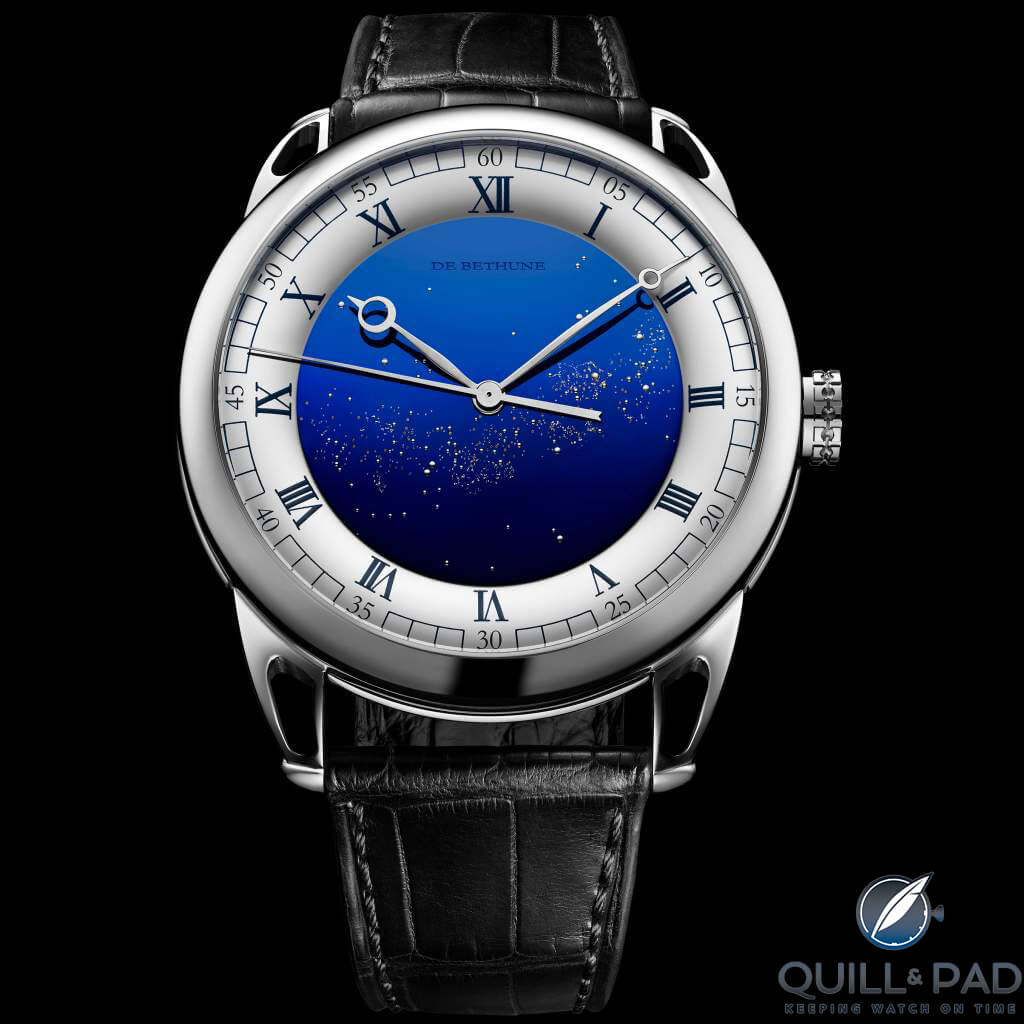
De Bethune DB25 Starry Varius Chronomètre Tourbillon
MG: Here is a very modest De Bethune creation rather highlighting its stunning dial than the fact that this watch has a tourbillon. This is how essentially all tourbillon watches should be created: without the status-inflating hole in the dial. A very promising re-start for De Bethune, which seems to have gotten very close to its own DNA and as a result only got better.
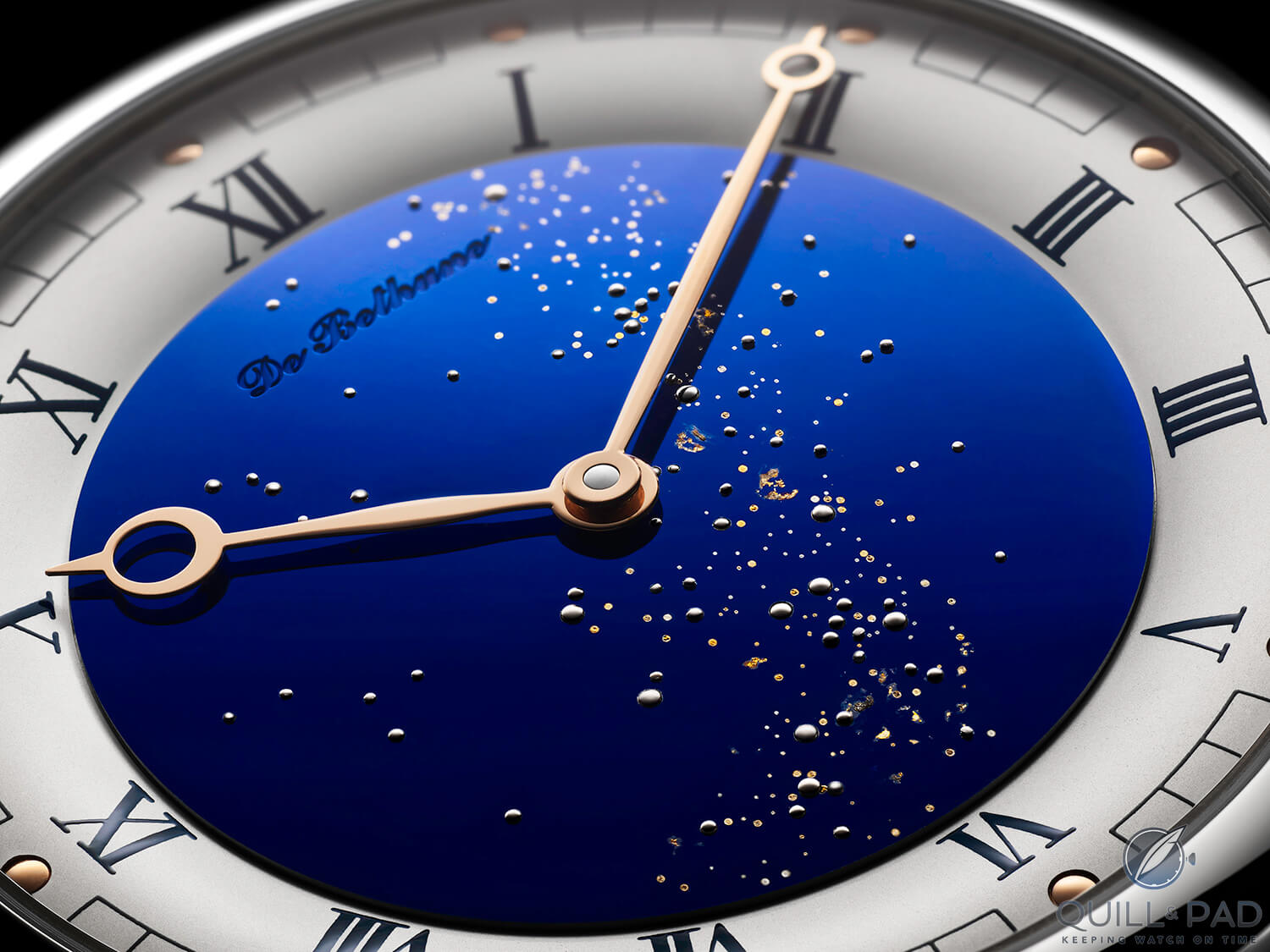
Close look at the beautiful dial of the De Bethune DB25 Starry Varius Chronomètre Tourbillon
AT: I am a sucker for deadbeat seconds, and this watch is no exception. The dial is interesting and with a silicon escapement, tourbillon, 36,000 vph, and a nearly 100-hour power reserve, this watch takes timekeeping seriously. I respect that.
The movement is a little ugly (something has to be on a De Bethune), but I can forgive that.
IS: One man’s duck is another’s swan, Ashton: the De Bethune would be my number-one pick just because of that fantastic movement with the double pallet lever, 5 Hz, silicon escapement on full view through the display back. And that’s 5 Hz with a 96-hour power reserve!
The drop-dead gorgeous blued titanium starry dial is the oh-so-good icing on the cake for me. And where the others talk the walk regarding precision and chronometry, De Bethune published facts and figures so you know it’s much more than a pretty face. The De Bethune DB25 Starry Varius Chronomètre Tourbillon is my clear winner in this category. Santa, if it’s not too much to ask . . .
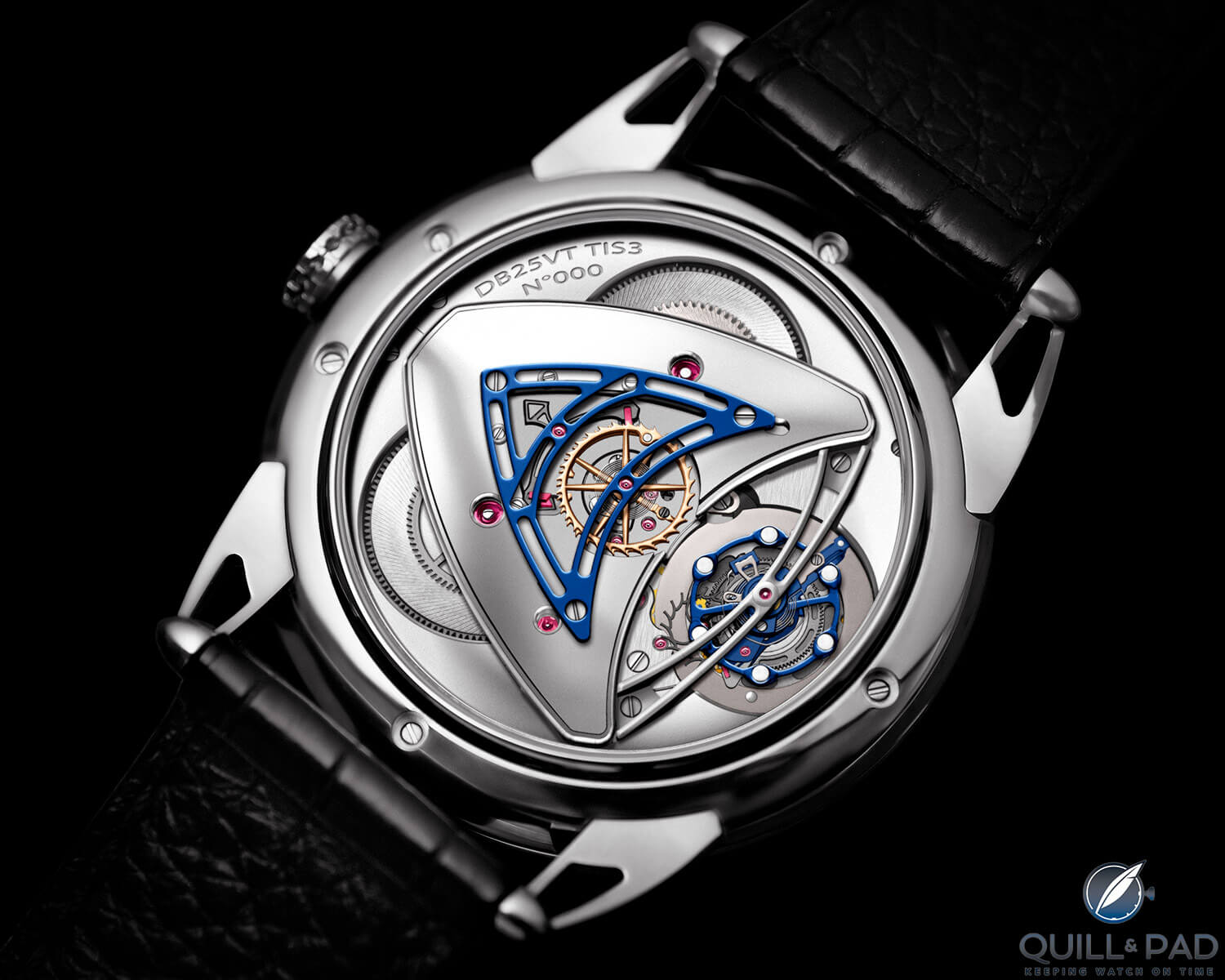
View through the display back to the chronometric escapement of the De Bethune DB25 Starry Varius Chronomètre Tourbillon
AG: Among this great selection, the De Bethune Starry Varius gets my vote. If Abraham-Louis Breguet were alive today, he would be making watches like those of De Bethune. This is one of the greatest and most underrated brands.
The dial side with its central blued titanium section is pure poetry, but the movement is stupendous, a tourbillon weighing less than a gram and deadbeat seconds – mind boggling. The movement architecture and finish are also in a whole different league.
For more information please visit gphg.org/horlogerie/en/watches/db25-starry-varius-chronometre-tourbillon.
Quick Facts De Bethune DB25 Starry Varius Chronomètre Tourbillon
Case: 42 x 10.3 mm, titanium
Movement: manual winding Caliber DB2109V4 with one-minute tourbillon, 96-hour power reserve, 5 Hz/36,000 vph frequency, silicon escapement, titanium balance wheel, two coaxial fourth wheels, double pallet lever
Functions: hours, minutes, jumping seconds
Limitation: 20 pieces
Price: 197,000 Swiss francs
Predicted Winners
Ian: De Bethune DB25 Starry Varius Chronomètre Tourbillon
Alex: De Bethune DB25 Starry Varius Chronomètre Tourbillon
Joshua: De Bethune DB25 Starry Varius Chronomètre Tourbillon
Martin: TAG Heuer Carrera Tourbillon Chronograph Tête de Vipère
Ashton: Zenith Defy Zero G
You may also enjoy:
Zenith Defy Zero G: A Lesson In Miniaturization
Quill & Pad’s Predictions In The Ladies Category Of The 2018 Grand Prix d’Horlogerie de Genève
Our Predictions For Best Men’s Watch At The 2018 Grand Prix d’Horlogerie de Genève (Hint: Spoilt For Choice)
Leave a Reply
Want to join the discussion?Feel free to contribute!





















































Joining the pack. De bethune, by a mile. What a dial, what a calibre.